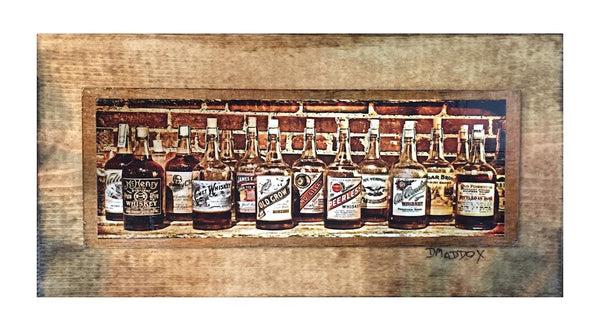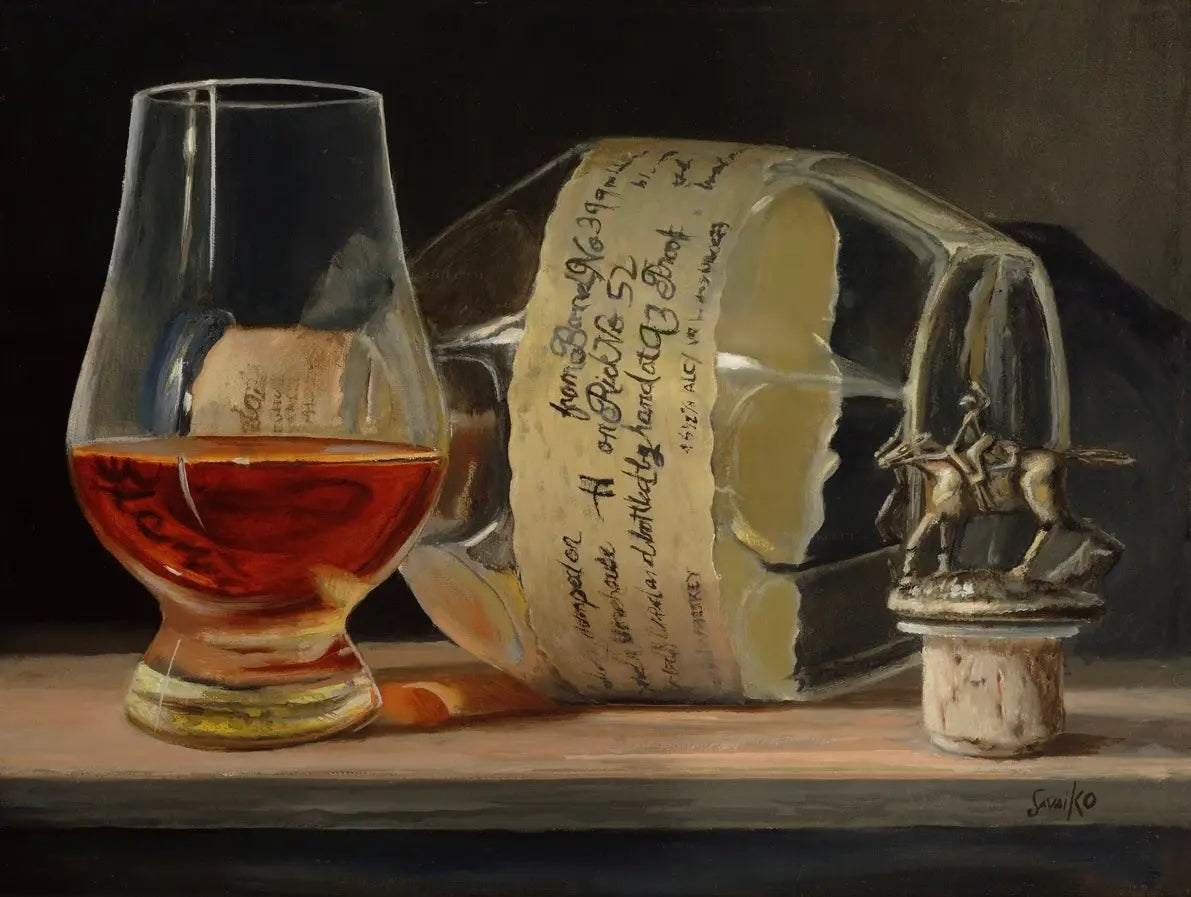Whiskey Art: Capturing the Essence of Distillation in Every Brushstroke
Wiki Article
The Relevance of Whiskey Art in Celebrating Heritage and Craftsmanship in the Beverage Industry
The detailed connection between whiskey art and the celebration of heritage and craftsmanship within the beverage market can not be overemphasized. With thoughtfully developed labels and containers, scotch brand names envelop their historic origins and the artisanal abilities that define their manufacturing techniques. This creative dimension not only enhances market charm however likewise functions as a conduit for cultural storytelling, promoting a deeper link between the craft and the consumer. As we explore the different facets of this topic, intriguing questions regarding the effect of modern patterns on conventional practices develop, triggering more examination.The Historic Origins of Whiskey
At the heart of scotch's attraction lies an abundant tapestry of historic roots that trace back to ancient human beings. The origins of bourbon can be linked to the distillation methods of the Sumerians and Babylonians around 2000 BCE, where very early forms of fermented grain drinks started to arise. It was in the Middle Ages that the art of purification developed substantially, particularly in Ireland and Scotland, leading to the production of bourbon as we know it today.
The term "bourbon" itself derives from the Gaelic word "uisce beatha," implying "water of life." This phrase underscores the cultural importance of scotch in Celtic cultures, where it was usually connected with routines, parties, and public bonding. By the 15th century, purification came to be an identified craft within monastic areas, paving the method for the establishment of lawful distilleries.
As profession paths increased, whiskey's popularity expanded, going beyond regional limits and capturing the interest of aficionados worldwide. Limited Edition. This historical trip shows not just the craftsmanship behind scotch manufacturing but also its integral duty in cultural and social contexts, marking it as a substantial beverage throughout history
Artistic Expression in Branding
Whiskey branding stands as an engaging junction of virtuosity and business, where aesthetic identification plays a vital duty fit consumer assumption. The looks of whiskey labels, packaging, and advertising and marketing products show not just the brand name's tale however likewise its core values and heritage. Via creative expression, distilleries communicate a narrative that resonates with customers, evoking emotions and sparking links.Using shade, typography, and images in branding serves to set apart products in a saturated market. Standard motifs might evoke a feeling of credibility and workmanship, while modern-day styles can symbolize innovation and forward-thinking. This critical artistic direction boosts brand name recognition and loyalty, enabling consumers to build a personal partnership with the whiskey they pick.
Moreover, creative expression in branding usually acts as a celebration of local heritage. Distilleries often include regional icons or historical references right into their layouts, creating a local color that welcomes consumers to take part in a broader cultural experience. Eventually, the artistry behind scotch branding not only improves visual charm yet likewise improves the general narrative of the brand name, fostering a deeper admiration for the craftsmanship and heritage embedded in each container.
Workmanship in Bottle Layout
The virtuosity obvious in scotch branding expands past aesthetic identification to include the craftsmanship entailed in container layout. Each container functions as a vessel not just for the spirit within, but additionally for the story it informs about its high quality, beginning, and tradition. The layout process needs meticulous interest to information, as aspects such as shape, product, and closure add dramatically to the overall perception of the whiskey.Craftsmanship in container layout involves selecting top quality glass that can boost the bourbon's color and quality, while likewise offering a tactile experience for the customer. The silhouette of the container must be both aesthetically appealing and functional, often reflecting the heritage of the brand. Lots of distilleries go with distinct forms or embossed logo designs that stimulate a feeling of authenticity and background.
Additionally, the label design and typography play an important duty in interacting the brand name's narrative. Limited Edition. A well-crafted container view it now not just mesmerizes the customer's eye yet additionally reinforces the brand's commitment to high quality and custom. By doing this, the workmanship of container style becomes a vital aspect of the scotch experience, merging creativity with a profound regard for heritage
Cultural Value of Scotch Art
Commemorating practice and workmanship, the social relevance of bourbon art transcends plain visual appeals, intertwining with the social and historical stories of the areas from which it comes from. Each container serves as a canvas, illustrating the special tales, mythology, and customs that have shaped local whiskey-making methods. The elaborate designs frequently show the heritage of the distillers, including symbols and concepts that resonate with the society and values of their areas.
In enhancement, bourbon art plays a crucial function in common events and celebrations, working as a tangible web link in between people and their shared experiences. By valuing the artistry in bourbon packaging, consumers cultivate a deeper understanding and regard for the craft, eventually enriching their pleasure of the beverage itself.
Modern Trends in Scotch Discussion
In the last few years, the discussion of bourbon has progressed to reflect contemporary preferences and trends while still recognizing traditional craftsmanship - Realism Art. Distilleries are increasingly concentrating on aesthetic components that boost the total alcohol consumption experience, connecting the gap in between heritage and modernityIngenious container layouts have actually emerged, frequently integrating lasting materials and imaginative tags that tell compelling stories. Several brand names currently work together with regional musicians, infusing their products with distinct visual expressions that reverberate with customers. In addition, limited-edition launches are frequently packaged in collectible containers, including worth and charm for lovers.

Verdict
read here Finally, whiskey art serves as an important avenue for sharing the heritage and workmanship intrinsic in the beverage industry. Through elaborate branding, ingenious container layouts, and culturally significant artistic aspects, scotch brand names efficiently honor their customs and get in touch with customers. This creative narrative not only elevates the admiration of scotch but likewise reinforces area identity and satisfaction amongst manufacturers. Ultimately, bourbon art plays a vital role in preserving and commemorating the rich social tapestry of whiskey-making.

Craftsmanship in container layout entails choosing high-quality glass that can boost the bourbon's color and clarity, while additionally giving a tactile experience for the consumer. In this means, the workmanship of bottle layout ends up being an important aspect of the bourbon experience, combining creativity with a profound regard for heritage.
In conclusion, bourbon art offers as a vital avenue for revealing the heritage and craftsmanship integral in the beverage sector.
Report this wiki page